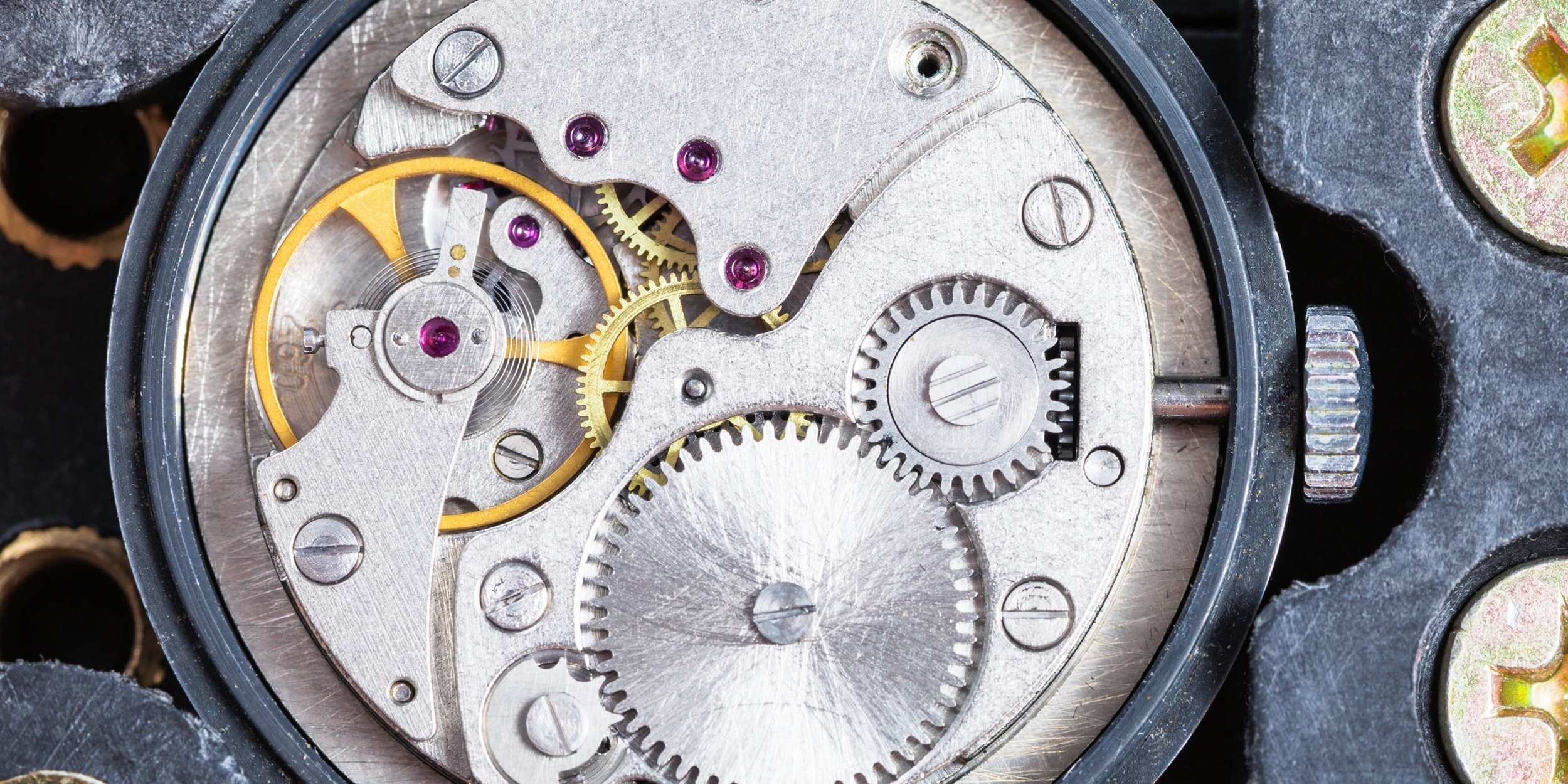Understanding the different types of watch movements
Last updated on the 8th of May 2023 by Huxley Mann.
There are many different types of watch movements. The most common type of watch movement is quartz, which uses a battery. However, there are also mechanical and automatic movements that utilise springs or your arm's natural motion. In this article, we'll look at the history of each of these movements and the fundamentals of how they function.
What is a watch movement?
A watch movement (also known as a "calibre") is the inner mechanism of a watch which powers its functions. It is typically composed of gears, springs, and other components that control the timing of its hands or display. The three main types of movements used in wristwatches are mechanical, automatic and quartz.
Manual watch movements
The invention of the manual watch movement is often credited to a man named Peter Henlein, a locksmith and clockmaker of Nuremberg, Germany, who is said to have invented the first pocket watch in 1510. However, it is believed that he was building upon existing technology and that mechanical watches had been in development since the 14th century.
A manual watch movement is a system of gears, springs and wheels that keeps track of time. The traditional mechanical movement is powered by a mainspring which is wound up by hand. This powers the balance wheel, which acts as an oscillator and regulates how quickly the other gears turn. These gears turn the hands of the watch dial, keeping accurate time in synchronisation with the rotations of the balance wheel.
Due to the intricate design elements of the manual watch movement and the superior level of craftsmanship, many high-end watch brands use manual watch movements, such as Rolex, Patek Philippe, Omega, TAG Heuer, Breitling and Audemars Piguet. Other popular mid-range brands also incorporate manual watch movements into their designs, including Seiko and Tissot.
Automatic watch movements
In 1770 Abraham-Louis Perrelet, a Swiss horologist, is credited with creating the first self-winding mechanism for pocket watches using an oscillating weight inside the timepiece that moved up and down, which marked the beginning of the automatic watch movement.
During World War I, it became clear that pocket watches were not the most practical timepieces for pilots and soldiers as they had to reach into their pockets every time they needed to check the time, as such Perrelet's self-winding pocket watch mechanism was developed further by the British Horologist John Harwood, who created the first self-winding or 'automatic' wristwatch.
Harwood's automatic wristwatch featured a freely rotating metal weight called the rotor. When the wearer moves their wrist, it causes the rotor to spin. This spinning motion automatically winds the mainspring inside the watch, providing power to the mechanism.
This invention revolutionised the luxury watch industry and increased the quality and reliability of automatic movement watches. It also opened up a new realm of possibilities for technological advancements, which have helped shape modern high-end watch movements found in many luxury watches today.
People are drawn to automatic watches for a variety of reasons. For some, the appeal is in the history and craftsmanship associated with the movement. Others appreciate that self-winding watches rarely have to be manually wound. Additionally, individuals love wearing automatic watches because they have a uniquely hefty feel on the wrist because of the weighted motor.
Quartz watch movements
Unlike mechanical and automatic watch movements that require hundreds if not thousands of intricate parts to work seamlessly in perfect harmony to function, a quartz watch relies on an electric current generated by a simple battery.
Before the development of quartz watches, Swiss watchmakers dominated the industry, creating intricate automatic and manual movements. However, the introduction of this new technology in the 1960s caused what is known as 'the Quartz Revolution' or "Quartz Crisis."
The Swiss watchmaking industry was hit hard by the digital revolution because they chose to remain focused on traditional mechanical watches, whilst other watch brands like Seiko, Citizen and Casio thrived by embracing this new technology allowing them to produce watches that are both reliable and affordable.
As a result, Quartz movements are often used in watches aimed at the lower to mid-range of the market because they are less expensive to produce whilst being more accurate and less prone to mechanical failure.
Choosing the right watch for you
We hope you've found this article helpful and provided you with a better understanding of the different types of watch movements and an insight into their history.
Which type of watch movement is best for you depends on your needs and budget. For example, if you need a watch that is accurate and reliable, then a quartz watch movement is the best option. On the other hand, if you are looking for a more sophisticated watch, then a mechanical or automatic watch movement might be a better choice. However, these watches generally require more maintenance and upkeep.
Do you need help determining which watch type best suits your needs and budget? One of life's inevitabilities is that one day your timepiece will need to be serviced. Avoid any nasty surprises by finding out about the common watch repairs related to the different watch movements.




